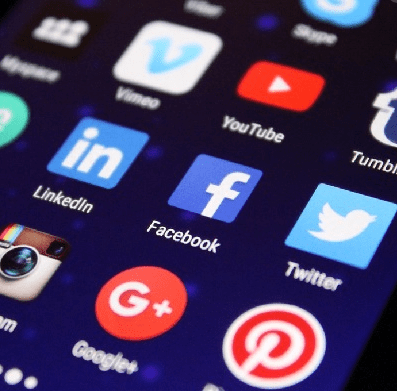A social media policy is crucial if you want to be in full control of your social media interactions
One social media gaffe can ruin the reputation of even the strongest brands out there. No marketer wants to face a host of outraged consumers. Social media might be the best thing that ever happened to branding, but one wrong move and you can be sure that a PR disaster will drag behind you for years. The internet never forgets. How to avoid that risk? By building a social media policy to set up standards for social media usage at your enterprise. Here are some practical tips for developing a social media policy.

1. Set out the basic rules
Developing a social media policy requires a clear understanding of your main goals on social channels. Here are a few questions to help you:
- What is your aim when setting up social media accounts?
- Which platforms do you plan to use in social marketing?
- What kind of content will you share?
- Which tools will you use to manage social media?
You can then move to the practical side of your policy:
- How will you spread the awareness of new standards among employees?
- How will your strategy respond to crucial industry changes?
Communicate your policy to everyone at your enterprise. With employees left in the dark, you risk that once they gain access to your social channels, they might commit some serious mistakes – especially if there's nobody to check their work.
You can easily see the error of unsupervised posting in this recent example of American Apparel, which posted a gif of the exploding Challenger on their Tumblr page. Facing heaps of negative feedback, the brand made it even worse. They admitted that their social media manager was born after the tragedy and had no idea about what the picture represented. Needless to say, this kind of apology didn't bring the desired effect.
2. Choose the speakers for your brand
A key part of your policy should delineate who may be authorized for posting on the behalf of your organization. Define characteristics employees should possess to be considered for the job. Talent in marketing is not important if you discover some extreme political opinions.
Hiring an external agency? make sure to choose the right one. Picking the wrong one can have serious consequences – in 2011, an employee of the company which managed @ChryslerAutos account famously tweeted: “I find it ironic that Detroit is known as #motorcity and yet no one here knows how to f#*!ing drive”. Chrysler had to apologize for a tweet that wasn't even their creation! Obviously, the employee got fired.
3. Select the level of employee involvement
All employees need to have an understanding of how social media works for branding. Before bringing them on board (and trust me, it's worth to do it for the sake of your brand), you should provide them with a strict rulebook to follow when using their own social media channels to talk about your organization. If you don't, you'll increase the risk of falling victim to a social media gaffe.
Apparently, even the CFO of Twitter should have been provided with a strict policy. Anthony Noto recently tweeted what was probably a private message in which he disclosed Twitter's plan to acquire an app called Shots. That's probably the last thing you'd like to happen to your brand.
4. Provide a definition of a social media crisis
A social media crisis can mean many different things – it depends on industry, location and organization. You'll be able to define a social media crisis over time, learning through your mistakes. Once you do, prepare a scheme of action for each kind to alleviate its negative impact. Monitor other brands to see how they deal with problems.
A good example of a social media campaign gone wrong are hashtags. Launched to support campaigns, hashtags are often hijacked by consumers and used to criticize the brand. This often happens to McDonald's – the brand debuted a refreshed version of their mascot, Ronald McDonald, using a simple hashtag #RonaldMcDonald. The plan backfired when consumers used it to criticize the makeover and the brand.
5. Show possible response scenarios
Your policy should sketch scenarios of possible interactions between your brand and the audience, providing employees with easy methods for responding. A procedure for responding will come in handy when they need to quickly address a negative comment.
Responding to negative comments in style can become a real marketing boost. A great example of this is Smart Car, a car-renting brand which responded with a playful infographic to a negative tweet sent by a consumer. Their response went viral and gained them quite a few followers.
6. Social listening and analytics
Finally, your policy should offer a plan for social listening and monitoring. Keeping an eye on what's happening on social media will help you to reduce response time when something bad occurs to your brand. Dealing with negative user content as soon as possible is a priority – web events gather steam very quickly and can soon spiral out of your control.
Monitoring online conversations is paramount to addressing such issues before they bring serious harm to brand reputation. US Airways took an entire hour to delete a very inappropriate response to a customer complaint on Twitter. Obviously, the tweet traveled far before being deleted and the embarrassing screenshot made headlines all over the web.
A social media policy is crucial if you want to be in full control of your social media interactions and avoid the risk of a terrible PR disaster. Those happen only to brands which never think twice about developing their social media policies.

Carol Williams is part of the team at
checkdirector.co.uk- a free director check portal. She has a deep interest in digital marketing which she combines with her expertise in community management and her passion for writing.




 Carol Williams is part of the team at
Carol Williams is part of the team at 


